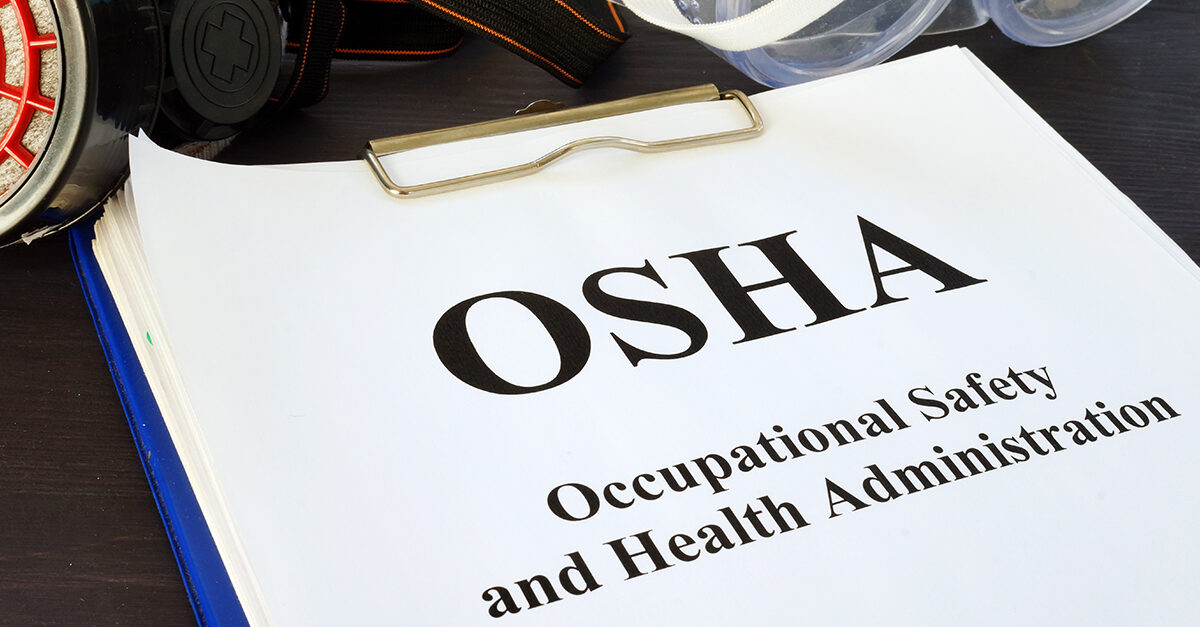When the United States entered the coronavirus pandemic nearly a year ago, many workplaces were quick to allow employees to work from home and institute safety protocols for workers remaining onsite, such as social distancing and the use of masks and other personal protective equipment (PPE). Facilities took on a whole new level of cleanliness as building managers revamped cleaning and disinfecting protocols.
Several states, Virginia being the first, issued temporary safety standards to protect employees from COVID-19 in the workplace. These standards were enforceable by the states’ Occupational Safety and Health Administrations (OSHA). Virginia’s standard became permanent January 13. Yet, there were still no federal standards in place, and not all workplaces offered equal COVID-19 protections to workers.
On January 21, one day after U.S. President Joe Biden was inaugurated, he signed 10 executive orders related to COVID-19, including one calling for the immediate release of national OSHA guidance for employers on best practices for keeping workers safe from COVID-19.
The guidance recommends that workplaces:
- Conduct a hazard assessment
- Identify control measures to limit the spread of the SARS-CoV-2 virus
- Adopt policies that don’t punish employee absences to encourage potentially infected workers to remain home
- Ensure that coronavirus policies and procedures are communicated to both English- and non-English-speaking workers
- Implement protections from retaliation for workers who raise coronavirus-related concerns.
Cleaning & Maintenance Management asked several experts at UL, the global safety science company, how the executive order will affect building service contractors (BSCs), facility managers, and others in the facilities maintenance industry.
Q: What does this executive order mean for building owners, managers, and occupants?
A: Eric Glass, senior Risk & Safety advisor at UL: This is the first formalized action or directive we have seen from the federal government to address workplace safety during the pandemic. This is a relatively new executive order, and you will see a lot of the word “should,” there is nothing enforceable yet…with “yet” being the key word.
Sean McCrady, director, Asset and Sustainability Performance, Real Estate and Properties Group at UL: OSHA has had guidance out for workplaces before, but it’s been more of a gentle nudge. What President Joe Biden is doing to make this more enforceable is the OSHA directives have gone more from general guidance to mandated guidance.
Mike Halligan, Global Building Inspection Program manager at UL: Unlike previous guidance, there will be penalties for not following this executive order.
Q: What will building owners and managers need to do to comply with the executive order?
A: McCrady: One of the most important things to consider is the quality of the indoor environment. Cleaning is super important, but the quality of indoor air and an understanding of how to properly ventilate will be a challenge for some facilities. People tend to get sick from being in close proximity to others, and proper ventilation—whether it’s natural ventilation or mechanical ventilation—can improve air quality and help eliminate airborne pathogens.
Initially, it comes down to really understanding how to manage and operate ventilation systems. Larger facilities such as hospitals or high rises have dedicated engineers who understand these systems. But when you have a small store in a strip mall, a warehouse, or an office building with no dedicated building engineer, there is often a gap in knowledge of how to properly manage and operate these systems.
Halligan: My clients have also talked to me about how they don’t want service vendors coming into buildings that have been closed due to the pandemic to maintain fire alarms, sprinklers, and other systems. So, they’ll just shut off these systems. Since there is no one in the buildings, there is no one to monitor these systems or watch the building temperatures. Shutting off these systems compromises a lot of built-in safety features. All these features still need to be maintained, even when no one is in the building.
McCrady: These businesses think they are doing the right thing for keeping people safe by not having the service vendors there, but many might not realize the unintended consequences.
Glass: With this OSHA response to the executive order, we are starting to see frameworks regarding employee responses, along with further guidance on how to educate employees in procedures and policies For instance, how are they going to be cleaning and disinfecting, what are the training requirements? What do employers and employees have to do? Companies have been complying with local ordinances regarding social distancing and face coverings, but now they will have a more formal written process to follow.
Mark Carpenter, principal scientist at UL: It often boils down to developing a plan, implementing the plan, then revising the plan as needed. Making the plan, such as a process for cleaning frequently used surfaces into something more standardized, seems to be the approach this executive order is looking at.
Halligan: Create a plan, teach it to your employees, implement it, adjust it, recalibrate, and then start over. What are your workers’ unique risks? What do they have to do to ensure safety within that industry?
Q: How could this executive order impact the prospects for people returning to their workplaces?
McCrady: I think time will tell. It’s all about angst and security. One would hope that having guidance that is more enforceable will give people more assurance. I don’t think the current situation of most people working from home all the time is going to stay. They need some kind of balance. People are social creatures. We like to collaborate.
Carpenter: My belief is the executive order will offer reassurance that risks are being controlled by enforceable means, and will help facilities maintain confidence that they are doing everything possible to keep workers safe.
Glass: The trend I am seeing is that employers and companies are doing the right thing in employing the protocols for bringing people back to the workplace. There is not a lot of new guidance in the executive order, but it’s also created validation for the companies that have been following these protocols all long. Generally, not many companies are that far off, many are ahead of things. There are administrative processes some will have to set up, but just about everyone was doing the best they could with what they had.
McCrady: Any companies that have been falling short will need to step up their game with this OSHA guidance.
Halligan: UL has a lot of resources available on its website. It can help businesses that don’t have the resources locally.




